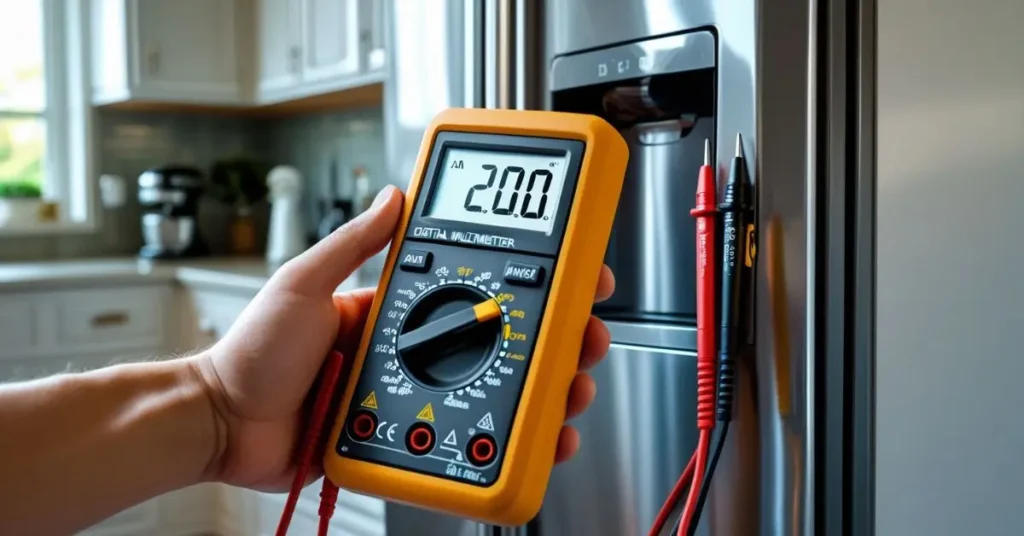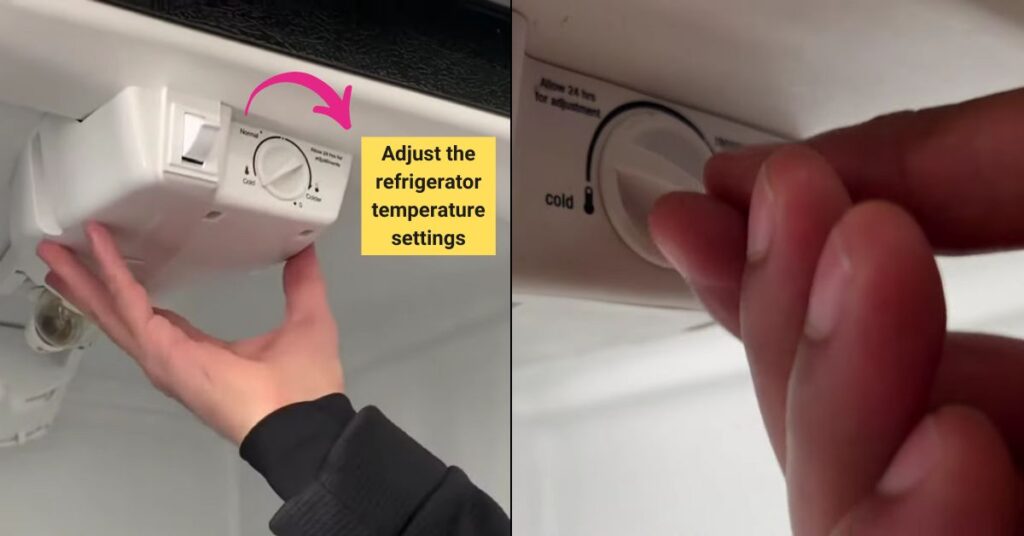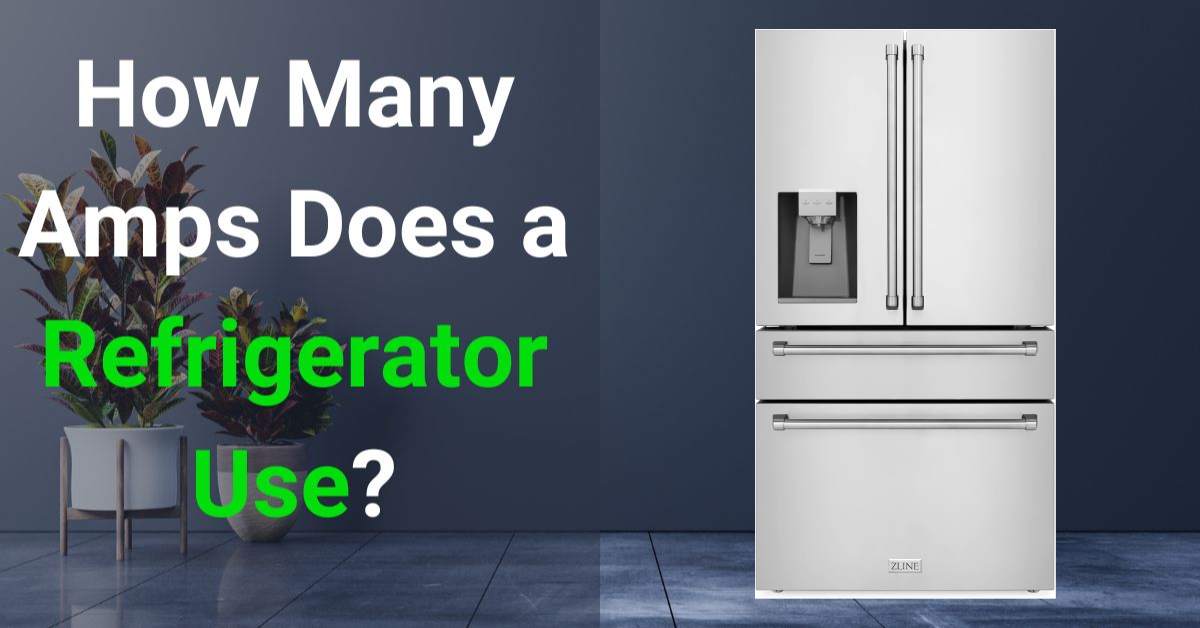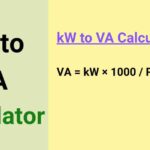Ever opened your electric bill and wondered, Why is this so high? If you’re like me, your first suspect is often the refrigerator.
It’s always humming in the background, keeping your food fresh—but how much power does it really use? More importantly, how many amps does a refrigerator use, and what does that mean for your wallet?
In this guide, I’ll walk you through everything you need to know about your fridge’s energy consumption. You’ll learn how to calculate amp usage, reduce costs, and even troubleshoot common issues. Let’s get started!
Amps 101: What You Need to Know
Before we geek out over refrigerators, let’s demystify amps. Amps (short for amperes) measure how much electrical current flows through a circuit. Think of it like water rushing through a pipe: amps tell you how “thick” that flow is.
Here’s why you should care:
- Safety: Overloading a circuit can fry your wiring or even cause fires.
- Cost: More amps = more money flying out of your pocket.
- Efficiency: Knowing your fridge’s amps helps you spot problems.
For example, if your fridge suddenly pulls 10 amps instead of its usual 3, that’s your cue to call a repair person.
How Many Amps Does a Refrigerator Use?
Most modern fridges use 2–4 amps while running. But hold on—this isn’t the whole story. Let me break it down:
Fridge Type vs. Amps Used
| Fridge Type | Running Amps | Startup Amps |
|---|---|---|
| Mini-fridge | 1–2 amps | 3–6 amps |
| Standard top-freezer | 2–3 amps | 6–9 amps |
| French door | 3–4 amps | 9–12 amps |
| Commercial fridge | 5–10+ amps | 15–20 amps |
Wait—startup amps? Yep! When your fridge’s compressor kicks on, it briefly draws 2–3x more amps (more on that below).
Why Does My Fridge Trip the Breaker on Startup?
Here’s a scenario: You’re hosting a party, and suddenly—click—the kitchen lights go dark. Your fridge tripped the breaker again! Why?
Startup surges are to blame. Your fridge needs a jolt of extra power (about 8–12 amps for 2–3 seconds) to start the compressor. If your circuit is already loaded with a microwave or toaster, that surge can overwhelm it.
Pro Tip: Plug your fridge into a dedicated 15–20 amp circuit. Avoid sharing outlets with other high-draw appliances!
Breaking It Down: Amps Per Hour vs. Amps Per Month
How Many Amps Does a Fridge Use Per Hour?
Your fridge isn’t running 24/7—it cycles on and off. Let’s say it runs 8 hours a day (typical for most homes). Here’s how you calculate it:
- Find running amps: Check your fridge’s label. Let’s assume 3 amps.
- Multiply by daily run time: 3 amps × 8 hours = 24 amp-hours/day.
- Hourly average: 24 ÷ 24 hours = 1 amp/hour.
So, your fridge sips about 1 amp per hour on average.
How Many Amps Does a Refrigerator Use Per Month?
Using the example above:
- Daily: 24 amp-hours
- Monthly: 24 × 30 = 720 amp-hours
But let’s get real with two examples I tested:
The Energy Star Champion
- Model: 18 cu. ft. Energy Star fridge
- Running amps: 2.5 amps
- Daily run time: 6 hours
- Monthly usage: 450 amp-hours
The 1990s Energy Hog
- Model: Vintage side-by-side
- Running amps: 5 amps
- Daily run time: 10 hours (thanks to worn-out seals)
- Monthly usage: 1,497 amp-hours
Yikes! The old fridge uses 3x more energy. Time for an upgrade?
5 Sneaky Factors That Spike Your Fridge’s Amp Usage
#1. Dirty Condenser Coils
Dusty coils force your fridge to work harder. I clean mine every 6 months with a $5 coil brush.
#2. Weak Door Seals
Test yours by closing the door on a dollar bill. If it slips out easily, replace the gasket (I did this last year—it saved me $15/month!).
#3. Overcrowding
A jam-packed fridge blocks airflow. Keep it 80% full for optimal cooling.
#4. Hot Room Temps
If your kitchen is 80°F+, your fridge runs 40% longer. Move it away from ovens or sunlight.
#5. Frequent Snack Attacks
Every time you open the door, the fridge needs 10–15 minutes to recover.
How to Measure Your Fridge’s Amps (I Did This Last Weekend!).

Want to see exactly what your fridge is using? Grab a multimeter (they’re under $20!).
Step 1: Unplug the fridge.
Step 2: Set the multimeter to measure AC amps.
Step 3: Clamp the meter around the power cord’s live wire.
Step 4: Wait for the compressor to kick in. Boom—you’ve got your reading!
Pro Tip: Compare your result to the manufacturer’s specs. If it’s 20% higher, your fridge might need repairs.
7 Actionable Tips to Slash Your Energy Bill

#1. Set Smart Temps
- Fridge: 37°F | Freezer: 0°F
Every degree colder hikes energy use by 6%.
#2. Defrost Regularly
Ice buildup acts like a winter coat for your freezer. Defrost when ice hits ¼ inch.
#3. Use Power-Saving Mode
Many newer fridges let you disable ice makers overnight. I use this—it’s a game-changer!
#4. Upgrade Wisely
If your fridge is 10+ years old, replacing it with an Energy Star model can cut usage by 50% (Energy Star guidelines).
#5. Avoid Heat Sources
Keep your fridge away from dishwashers, ovens, or sunny windows.
#6. Use a Surge Protector
Power surges can fry components, leading to inefficiency.
#7. Fill Empty Space
No food? Fill gaps with water jugs. They help retain cold air.
Why Your Fridge Matters?
Optimizing your fridge isn’t just about saving cash—it’s about sustainability. The average fridge emits 1,300 lbs of CO2 yearly. By tweaking yours, you’re helping fight climate change.
FAQs
Can a refrigerator run on a 15-amp circuit?
Yes, but don’t share the circuit with microwaves or toasters.
How many amps does a mini fridge use?
Most mini-fridges sip 1–2 amps—perfect for dorms or offices!
Why is my fridge using too many amps?
Faulty compressors, dirty coils, or aging parts could be to blame.
Do Energy Star fridges use fewer amps?
Absolutely! They’re 20–30% more efficient than standard models (DOE study).
Conclusion
Now that you know how many amps does a refrigerator uses, you’re armed with the knowledge to reduce waste and lower your bills. Whether you’re adjusting temperatures, cleaning coils, or upgrading to an efficient model, every small step counts.
I’d love to hear from you! Have you tried any of these tips? Do you have a question I didn’t cover? Drop a comment below and let’s chat. And if you found this guide helpful, share it with a friend who’s tired of sky-high energy bills!
Did you get a fridge energy hack I missed? Share your genius in the comments! Let’s help each other save money and the planet—one amp at a time.










